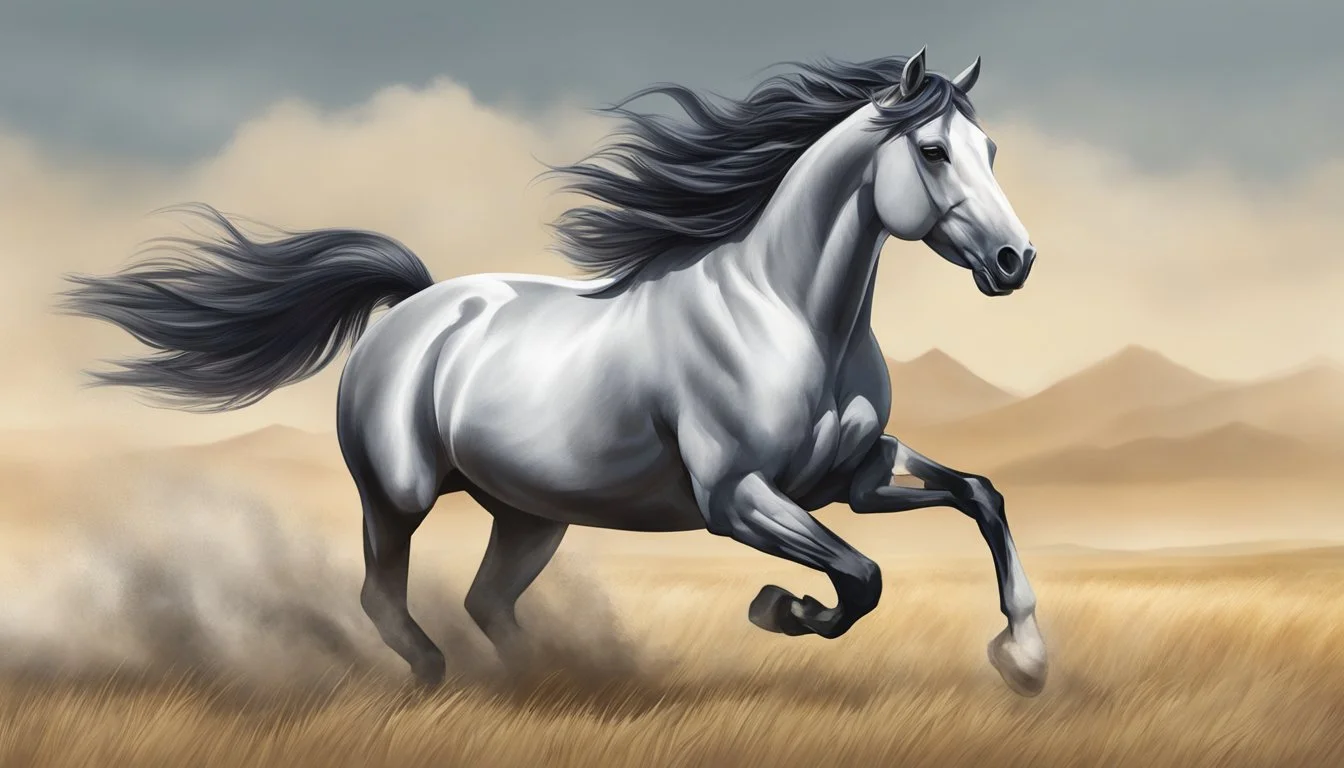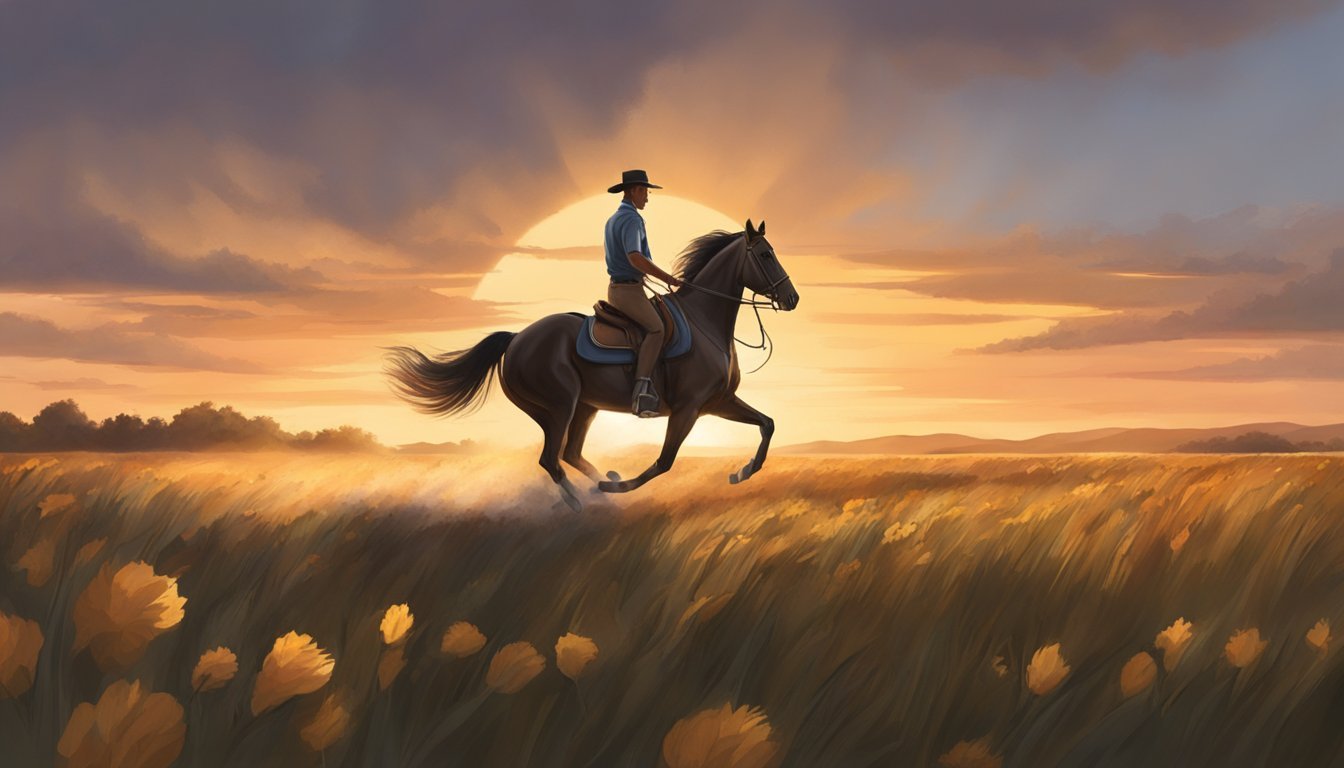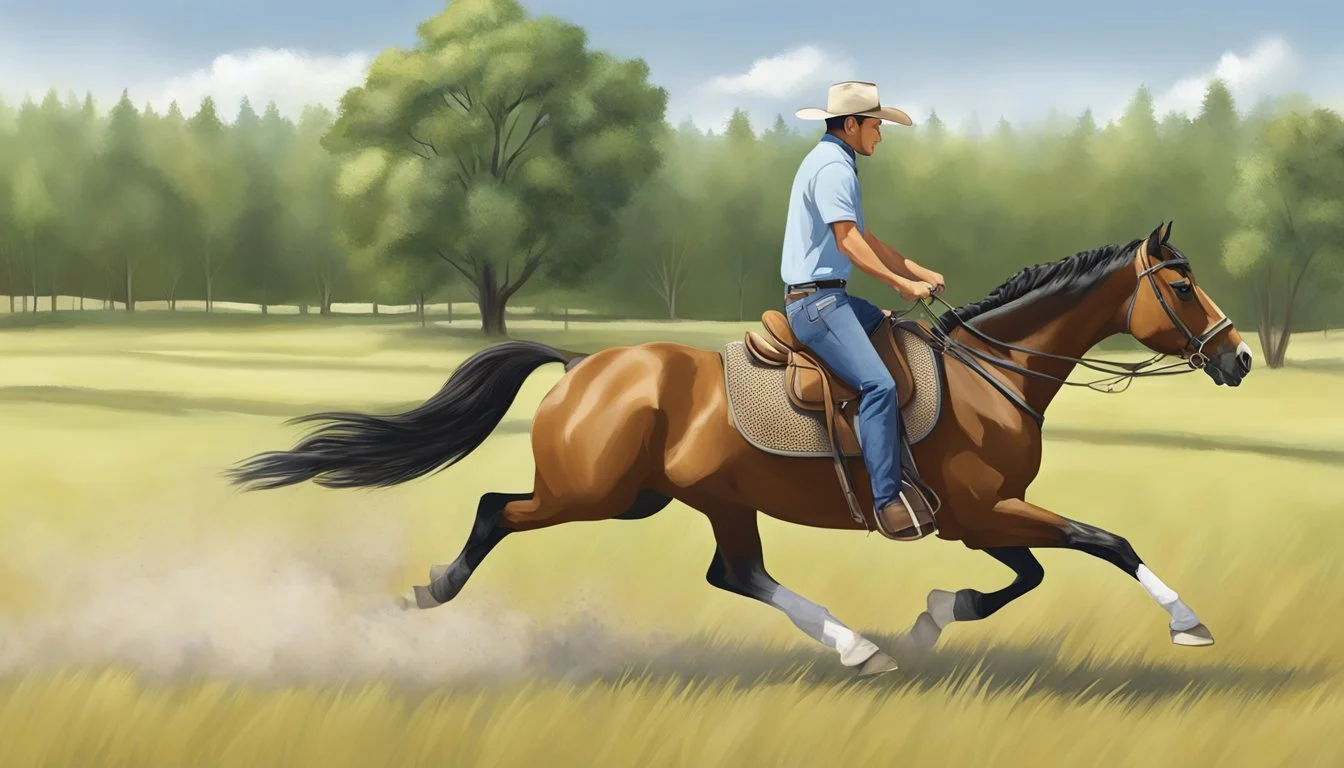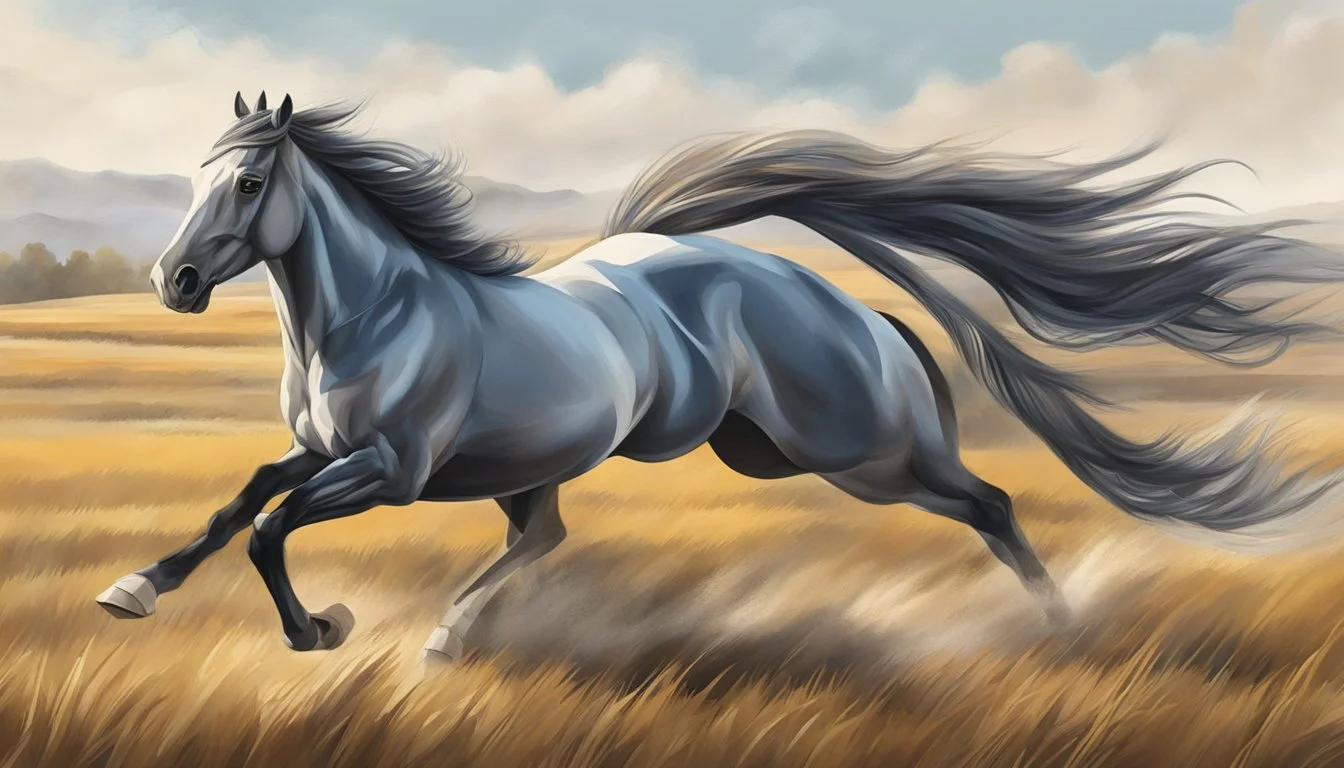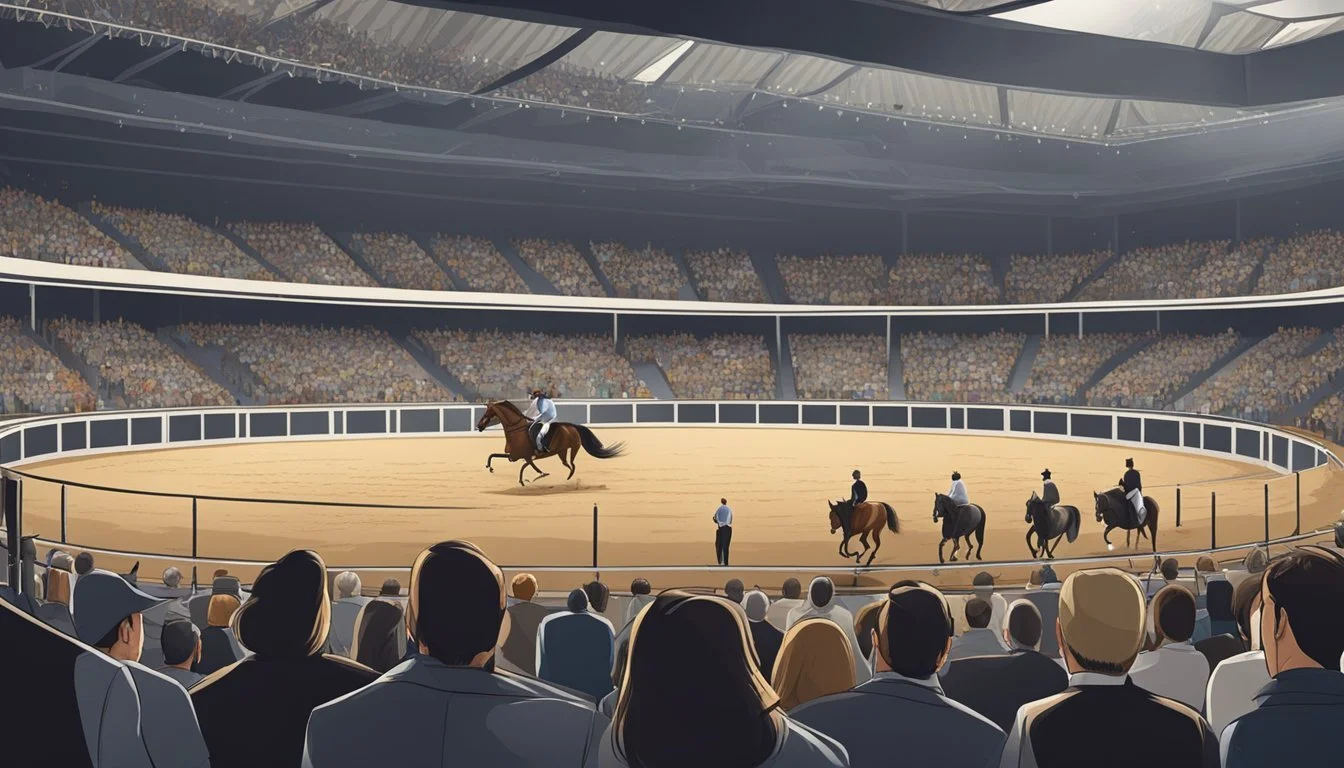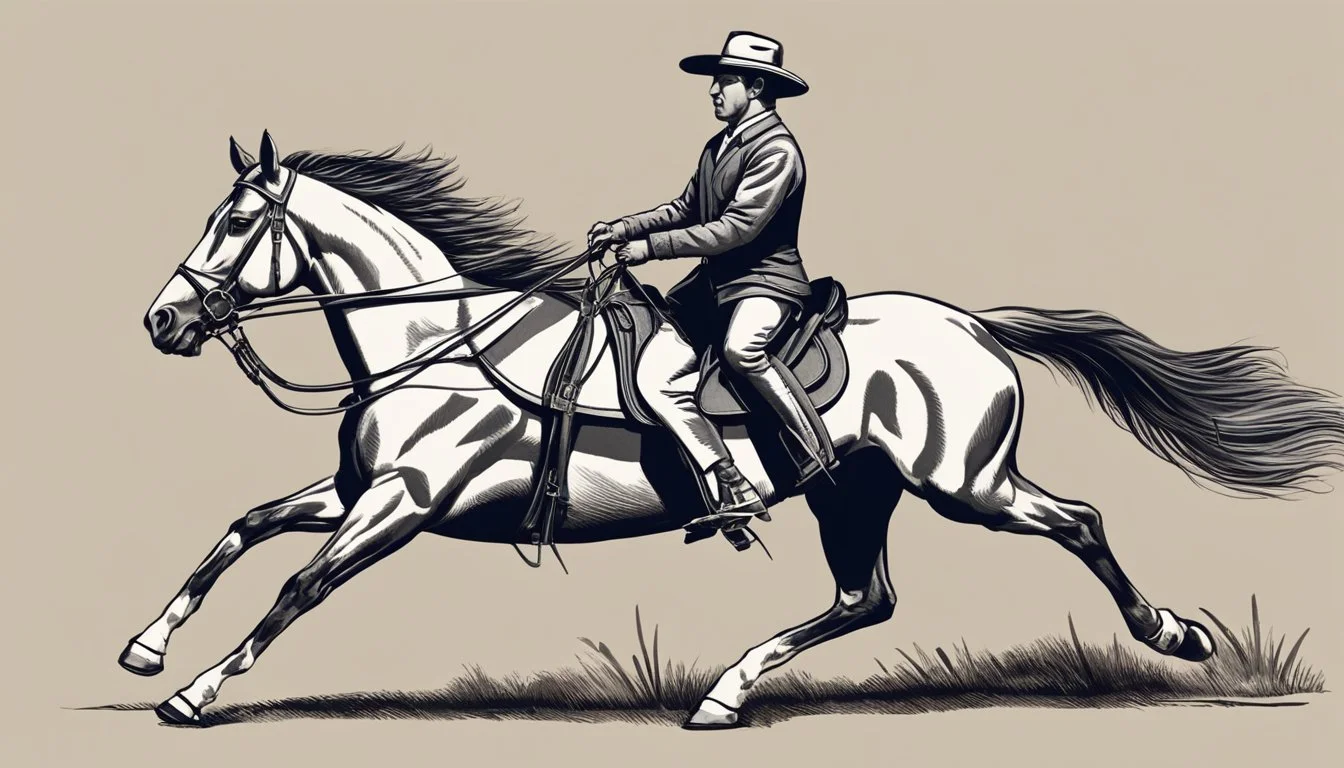Horse Riding Basics
Essentials for Ranch Work and Leisure Riding
Horse riding is a multifaceted discipline that has evolved from practical ranch work to a recreational activity enjoyed by people around the world. Whether on a sprawling ranch or a serene trail, the bond between horse and rider is forged through consistent practice and an understanding of equine behavior. The saddle becomes a point of connection, a tool through which the rider can communicate with their horse. Mastery in horse riding requires not only physical skills but also a deep appreciation of the horse's needs and capabilities.
Ranch riding, in particular, showcases the essential attributes of a versatile ranch horse, reflecting both the heritage of Western riding and the requirements of modern equestrian sports. In ranch riding shows, riders demonstrate their horse's ability to perform tasks that mirror the work of a ranch horse, highlighting the horse's obedience, agility, and strength. This discipline emphasizes the practical aspects of horsemanship, demanding a horse that is both well-trained and responsive.
Equally, leisure riding offers a more relaxed experience, where the pace is dictated by the rider's desire to enjoy the environment and the company of their horse. Regardless of the setting or purpose, the primary goal is a harmonious relationship between horse and rider, characterized by mutual respect and clear communication. As with any equestrian discipline, a foundation in horse riding basics is essential for the safety and enjoyment of both the horse and rider.
Understanding the Basics
In mastering horse riding, a solid grasp of the fundamentals is crucial. This includes an education on horse anatomy, the different riding disciplines, and the necessary riding gear, which will ensure both safety and comfort while riding.
Anatomy of a Horse
The anatomy of a horse is complex and understanding it is essential for effective riding. Key parts of a horse that a rider should be familiar with include the back, where the saddle sits, the withers, which is the highest point of the back at the base of the neck, and the muzzle, an area that includes the mouth and nostrils. Familiarity with these parts aids in communication and proper gear placement.
Types of Riding Disciplines
There are various riding disciplines, each with its own set of techniques and purposes. For instance:
Western Riding: Characterized by a comfortable saddle designed for long hours of ranch work and a style that uses a loose rein.
English Riding: Known for its closer contact saddle that enhances communication with the horse and is used for disciplines like show jumping and dressage.
Gearing Up: Essential Equipment
Proper equipment is vital for safe and effective horse riding. Riders should ensure they have the following:
Helmet: A properly fitted helmet is non-negotiable for safety.
Saddle: The saddle should match the riding discipline and fit both horse and rider.
Bridle and Bit: These are used for steering and communication; the right fit and type are paramount.
Stirrups: They must be adjusted to the correct length to support the rider's legs without causing strain.
Riding Skills and Techniques
Acquiring the proper riding skills and techniques is essential for safe and effective horseback riding. These skills provide the rider with the necessary control and communication with the horse through various movements and gaits.
Mounting and Dismounting
Mounting a horse requires a methodical approach. A rider should stand to the horse's left side, firmly holding the reins and the saddle. They then place their left foot in the stirrup and swing their right leg over the horse to mount. For dismounting, the process is reversed, ensuring that they maintain balance and do not startle the horse, thus keeping the situation controlled and safe.
Basic Riding Positions
A rider's position is pivotal for maintaining balance and control during movement. Here are key aspects of the basic riding positions:
Walk: While walking, the rider should sit deep in the saddle with a relaxed posture, feet in the stirrups, and the reins held comfortably in hands to guide the horse.
Trot: During a trot, the rider maintains a rhythmic rising and sitting in sync with the horse's gait. They must keep their heels down and legs stable for balance.
Canter: For a canter, the rider sits more deeply in the saddle, using leg pressure and rein signals to cue the horse while maintaining a forward stance.
Developing proficiency in these techniques is the foundation of effective horsemanship, ensuring that each command translates into a graceful and controlled response from the horse.
The Horse-Rider Connection
Successful horseback riding hinges on a strong connection between horse and rider, where communication and control are essential for safe and effective riding, and building a bond is foundational for a partnership founded on trust and confidence.
Communication and Control
An effective horse-rider communication system is established through consistent control using reins and a bit, which serve as direct contact points. Riders convey commands with the reins, which articulate movements such as turns and halts. A well-trained horse is alert to these cues, allowing for precise actions during rides.
Direct Reining: Pulling the rein to guide the horse in a specific direction.
Neck Reining: Laying the rein against the horse's neck to cue turns.
Bits serve as leverage for control, and choosing the right type is paramount. An inappropriate bit can lead to discomfort or miscommunication. Riders should aim to use minimal pressure, striving for a light hand to encourage the horse's responsiveness rather than forcing compliance.
Building a Bond with Your Horse
The bond between the rider and the horse is cultivated through consistent, positive interactions. A horse must trust its rider to feel confident and perform well. This trust is achieved through:
Regular grooming: Establishes a routine and physical connection.
Groundwork exercises: Enhance communication skills and respect.
Quality time spent together: Beyond riding, which creates mutual understanding.
Riders should also recognize their horse's individual personality and adjust their approach accordingly. Understanding non-verbal cues helps in identifying the horse's mood and ensuring its well-being.
Safety and Etiquette
In horse riding, both safety and etiquette form the bedrock for a harmonious experience. Riders must adopt a mindset geared towards minimizing risks, while observing established practices that respect the animal and fellow riders.
Riding Safely: Tips and Precautions
Attire:
Helmet: Always wear a properly fitted helmet to protect against head injuries.
Behavior:
Attitude: Approach riding with a calm demeanor and a focus on clear communication with the horse.
Confidence: Maintain a confident posture and steady handling to promote trust with the horse.
Discipline: Follow instructions and practice self-control, especially when things do not go as planned.
Practical Measures:
Check equipment before riding to ensure everything is secure.
Learn from qualified instructors to build a solid foundation in riding skills.
Understanding Ranch Etiquette
Interaction with Horses:
Speak softly to a horse upon approach to avoid startling it.
Respect a horse's space and avoid quick movements that could be perceived as threats.
Ranch Rules:
Observe barn hours and rules such as shutting gates and avoiding loud noises.
Always clean up after oneself and the horse to maintain a tidy environment.
Responsibility:
If a piece of equipment is used or moved, return it to its rightful place.
Prioritize the horse's well-being with gentle handling and careful attention to their needs.
Ranch Riding Fundamentals
In the sphere of equestrian sports, ranch riding embodies the heritage of the working ranch horse, requiring specific traits and skills that are both distinct and practical. This discipline is reflected through designed patterns that showcase the horse's ability to perform typical ranch tasks with agility and fines.
Ranch Horse Characteristics
Ranch horses possess a blend of agility, calmness, and intelligence, making them well-suited for the varied demands of ranch work. They are expected to navigate obstacles with ease and demonstrate a range of gaits — from a collected walk to an extended trot, and a smooth lope — showing both flexibility and forward motion. A ranch horse should respond willingly to minimal cues and perform with a natural and free-moving style indicative of a true working horse.
Temperament: Calm, responsive, and alert.
Movement: Smooth gaits; able to perform walk, trot, and lope.
Responsiveness: Quick and precise reaction to rider's cues.
Versatility: Able to transition between gaits and tasks effortlessly.
Ranch Riding vs. Trail Riding
While both ranch riding and trail riding involve navigating through a series of obstacles, the intentions and settings distinguish the two. Ranch riding is conducted in an arena with a focus on the functional work of a ranch horse, highlighted through specific patterns that include tasks such as gate opening, roping, and other simulated ranch work. Conversely, trail riding is recreational, typically taking place in natural settings where the trail itself with its inherent unpredictability is the primary obstacle.
Location: Ranch riding is arena-based; trail riding is outdoors on natural paths.
Objective:
Ranch Riding: Showcase skills relevant to ranch work through set patterns.
Trail Riding: Navigate natural terrain primarily for leisure.
In essence, ranch riding evaluates a horse's performance in tasks that are vital to ranch management, while trail riding is about enjoying the journey through natural landscapes.
Training Techniques
Training horses for ranch work involves a systematic approach that ensures the horse acquires the necessary skills efficiently and safely. Trainers focus on building a solid foundation, advancing a horse's training through repetition, and helping horses understand and perform a variety of maneuvers requisite for ranch work.
Introducing Young Horses to Ranch Work
When introducing young horses to ranch work, trainers emphasize a gentle and progressive approach. Initially, the focus is on:
Desensitization: Exposing young horses to a variety of stimuli they may encounter during ranch work, such as ropes and logs, to foster calmness and confidence.
Basic Gaits: Ensuring the young horses are comfortable with walking, trotting, cantering, and galloping in a controlled manner.
Simple Maneuvers: Teaching basic maneuvers like stopping, turning, and moving sideways, also known as laterals.
Practice Routines for Skill Improvement
Consistent practice routines are essential for skill improvement in ranch horses. Trainers use a variety of exercises to enhance precision and performance, including:
Pattern Work: Practicing specific patterns to improve accuracy and teach horses to navigate a course with efficiency.
Obstacle Training: Introducing obstacles such as logs and poles to simulate real ranch conditions, advancing the horse's ability to handle similar challenges when working.
Extended Gaits: Encouraging horses to lengthen their strides and maintain forward movement at extended gaits for improved travel over distances.
Trainers may tailor exercises to address individual horse needs, ensuring that each animal progresses at an appropriate pace. Skillful training coupled with patient, consistent practice establishes a reliable ranch horse ready for the demands of ranch work.
Advanced Maneuvers
In advanced horse riding, riders progress to refined actions such as the lope and canter, as well as executing precise, controlled turns and rollbacks. Mastery in these aspects enhances both the horse’s skillset and the partnership with the rider.
Mastering the Lope and Canter
The lope and canter, closely related gaits characterized by a natural, three-beat rhythm, are pivotal in advanced horse riding. Riders aim to achieve a balanced and smooth lope where the horse appears effortless as it moves. Essential to this gait are lead changes, a maneuver during which a horse switches from one lead to the other while in motion. Executing a correct lead change requires a precise combination of cues and timing, enabling the rider to maintain a rhythm and balance.
Lope Success Tips:
Maintain a relaxed, yet secure seat to prevent hindering the horse's movement.
Use light, consistent cues to keep the horse in a steady rhythm.
Practice lead changes initially in a straight line before attempting during turns.
Precision in Turns and Rollbacks
Turning maneuvers, including spins and rollbacks, are a test of a horse’s agility and the rider’s command over direction and speed. A spin is a 360-degree turn around the hindquarters, performed in place, whereas a rollback is a 180-degree turn after a halt, followed by an immediate canter in the opposite direction.
Key Elements for Precise Turns:
Before initiating a turn, the rider needs to ensure the horse is balanced and responsive.
During a rollback, clear cues and a concerted effort to maintain the horse's forward momentum are crucial.
Riders utilize these maneuvers in various equestrian disciplines, from reined cow horse to dressage. Mastering these advanced movements underscores a rider's finesse and the seamless connection between rider and mount.
Competition and Shows
The competition arena for ranch riding showcases the versatility and skill of horse and rider duos. Through specific classes, both are tested for their ability to perform maneuvers that reflect practical ranch work.
Preparing for Ranch Riding Classes
Competitors aiming to excel in ranch riding classes must prioritize precision and control during their preparation. Consistent practice of the horsemanship pattern, which involves a series of maneuvers assigned by the show, is crucial. Riders should focus on:
Smooth Transitions: Moving seamlessly between gaits.
Pattern Accuracy: Executing the required elements of the class with attentiveness to the order and shape of the pattern.
Training should also simulate various scenarios a horse might encounter during ranch work to ensure they are well-rounded and adaptable.
Understanding Judging Criteria
Judges at ranch riding shows, often governed by organizations like the American Quarter Horse Association (AQHA) and American Paint Horse Association (APHA), are looking for key attributes in both horse and rider. They evaluate:
Correctness: How accurately the pair performs the required movements.
Efficiency: The effectiveness with which obstacles are handled.
Attitude and Mannerisms: The horse should exhibit a willing and calm demeanor.
Appearance: While not the primary focus, a neat and professional presentation reflects well on the competitor.
It is essential for competitors to familiarize themselves with the specific criteria and standards set by the governing association of the show to optimize their performance.
The Equestrian Community
The equestrian community thrives on shared knowledge and passion for horse riding, offering structured avenues for enthusiasts to connect, learn, and compete.
Joining an Association
American Quarter Horse Association (AQHA) and American Paint Horse Association (APHA) are two prominent organizations that form the backbone of the equestrian community. By becoming a member, riders and horse owners embed themselves into a network of competitions and educational resources. Associations like AQHA pave the way for disciplines like ranch riding, establishing and upholding competition standards. ABHA supports riders and exhibitors by hosting events and providing avenues for skill showcasing and advancement.
Youth Programs: Both organizations offer specialized programs aimed at engaging young equestrians, focusing on their development as riders and competitors.
Benefits of Riding Clinics and Workshops
Clinics and workshops offer invaluable hands-on experience under the guidance of seasoned professionals. These events are tailored to hone specific skills:
Skill Improvement: Workshops led by experts help riders enhance their horsemanship, with emphasis on techniques crucial for ranch riding competitions.
Community Engagement: Clinics serve as a platform for riders to meet and interact, fostering a sense of community and shared learning.
Exhibitor Preparation: Participation in clinics can directly translate to improved performance in competitive events, where exhibitors are judged on precision and the horse's movement.
By leveraging associations and educational events, equestrians can grow their skills, connect with like-minded individuals, and contribute to the rich tapestry of horse riding as both work and leisure.



